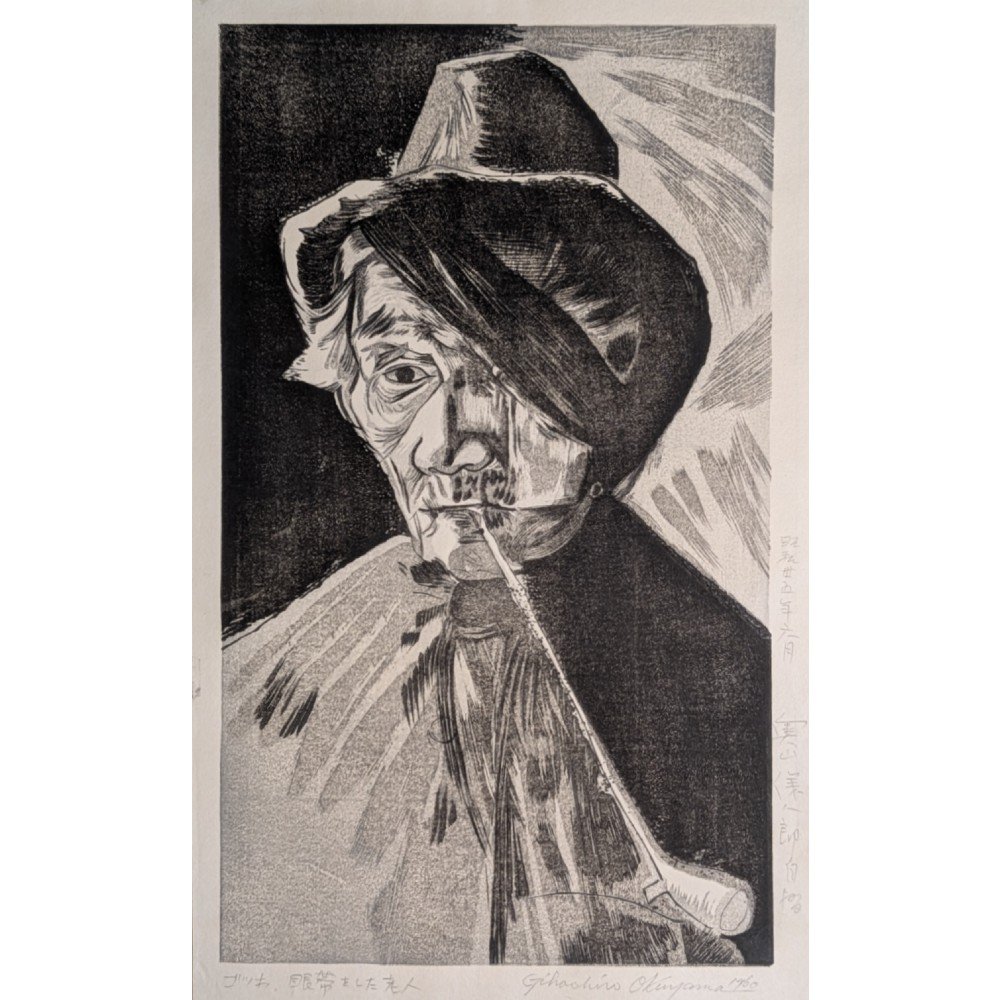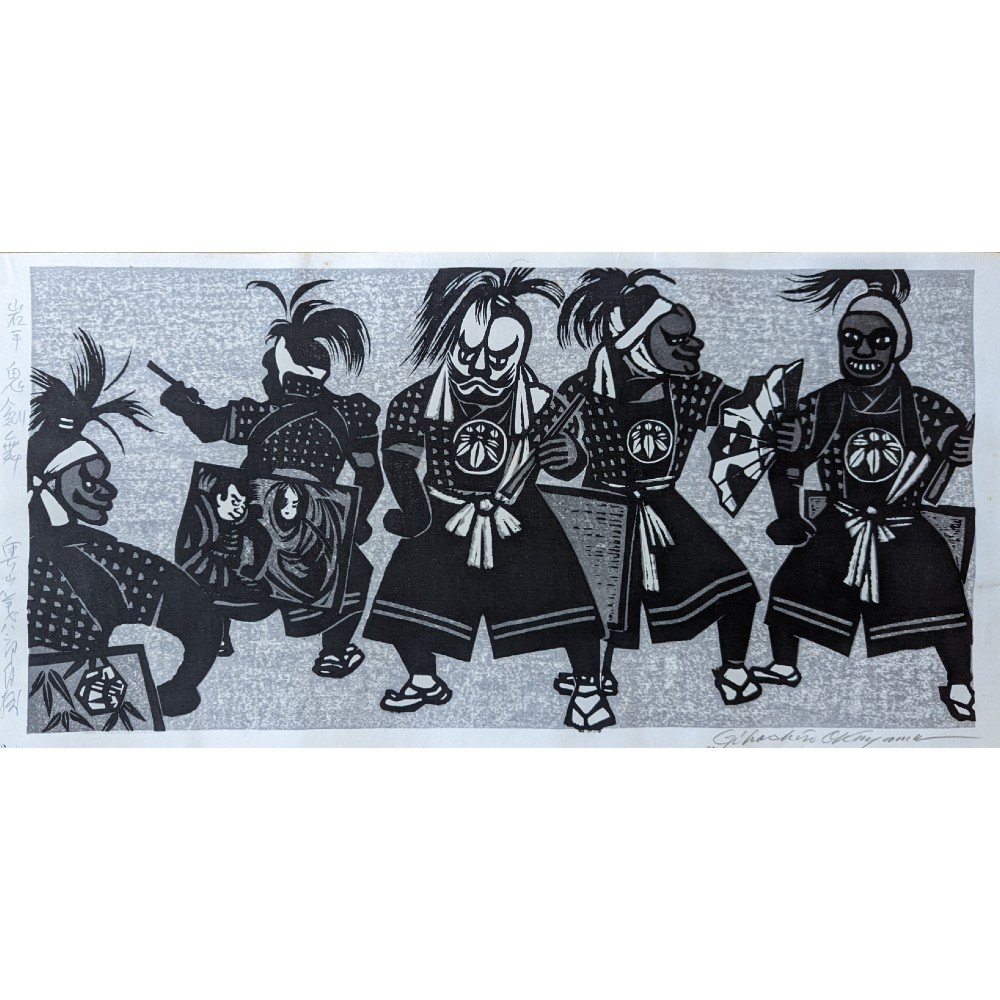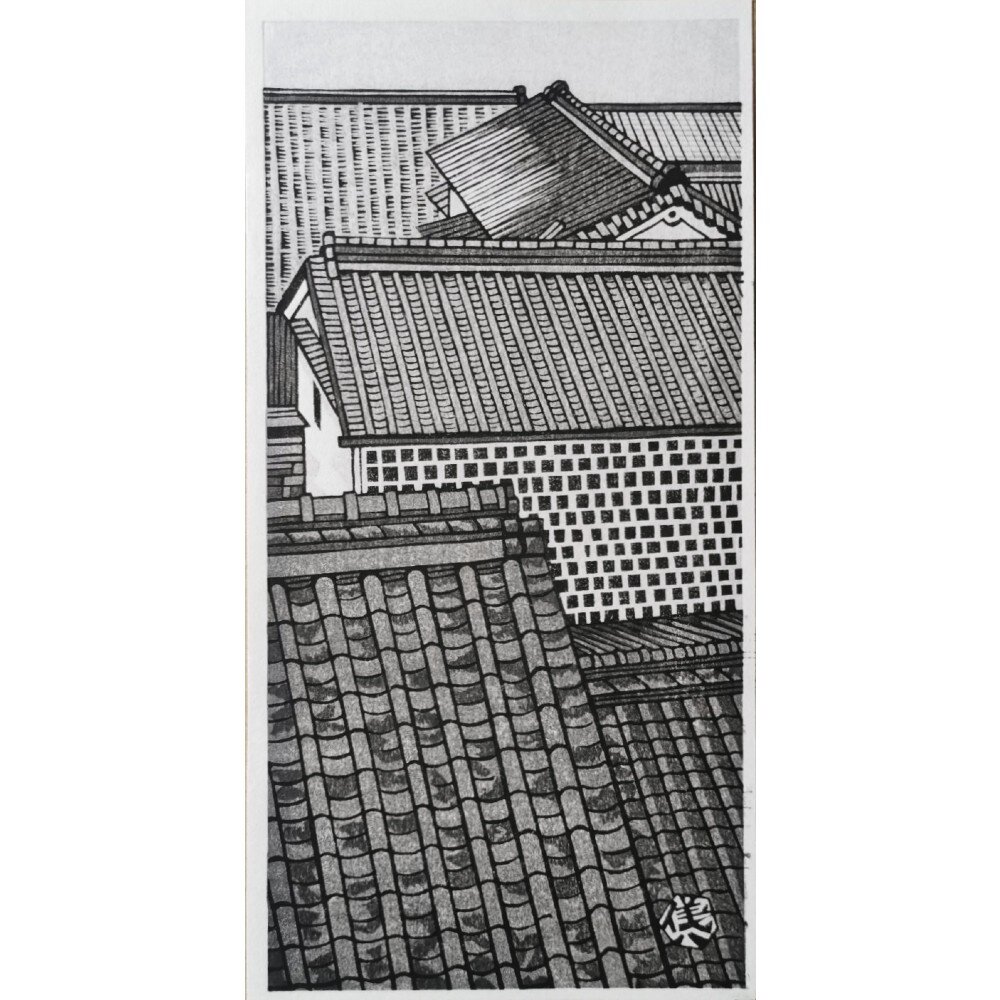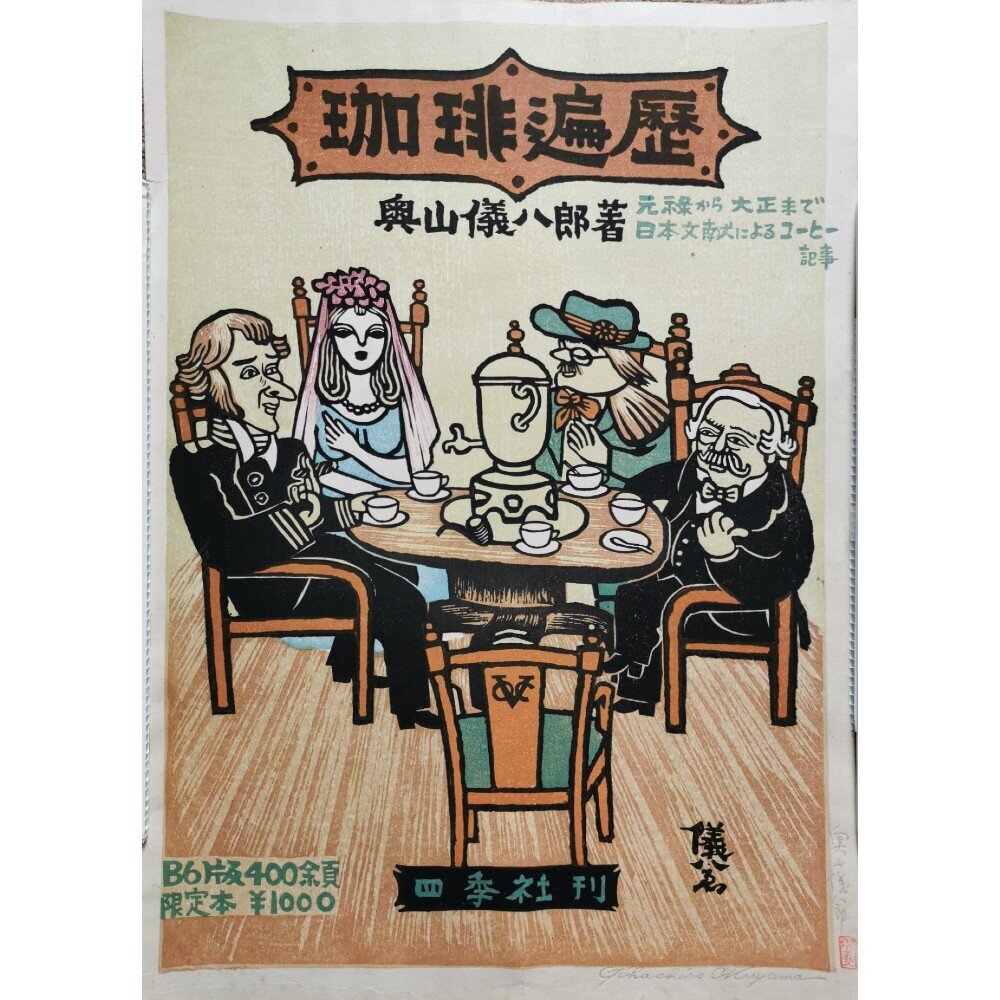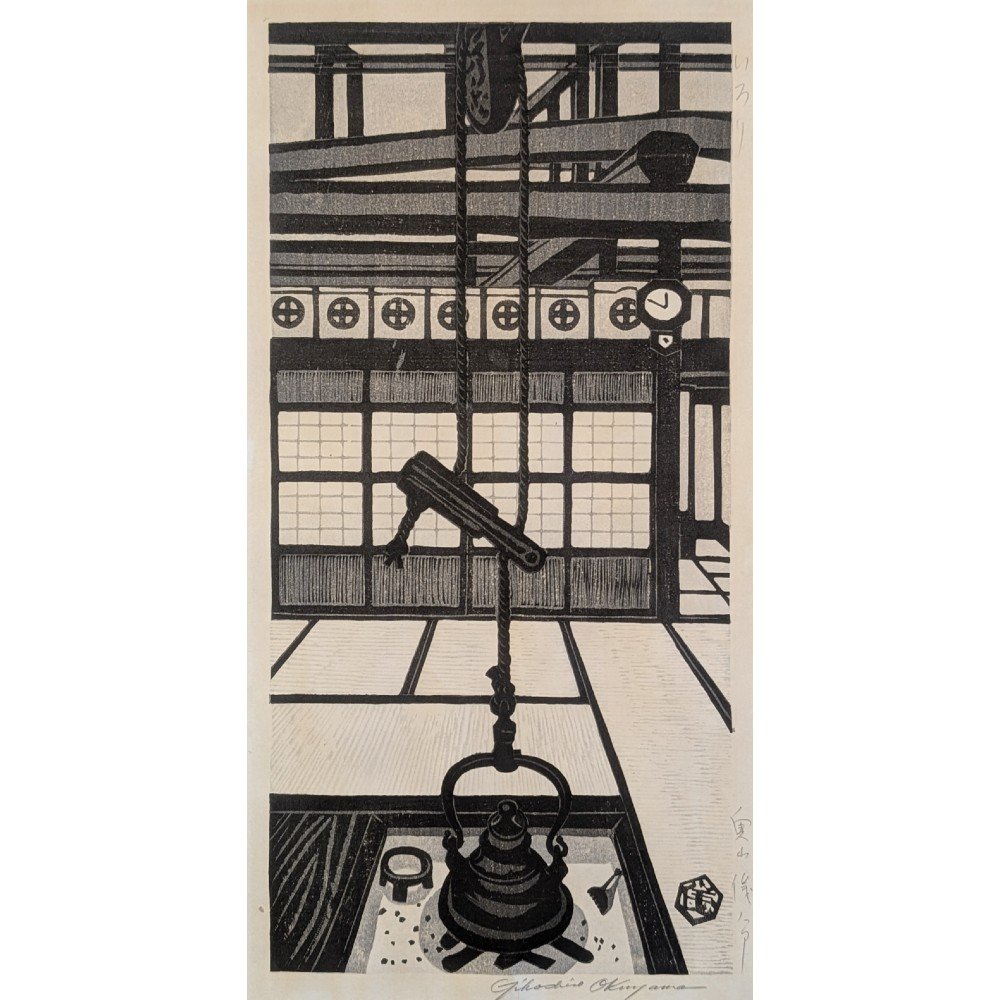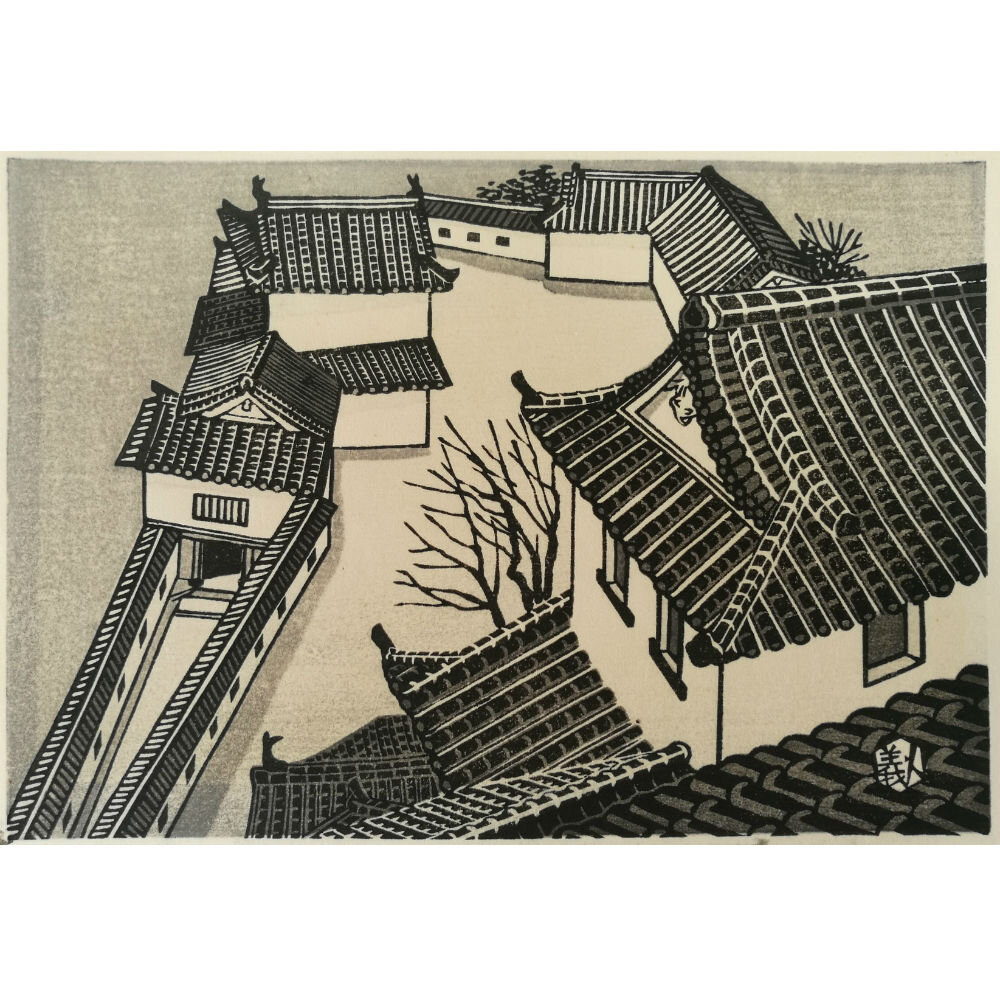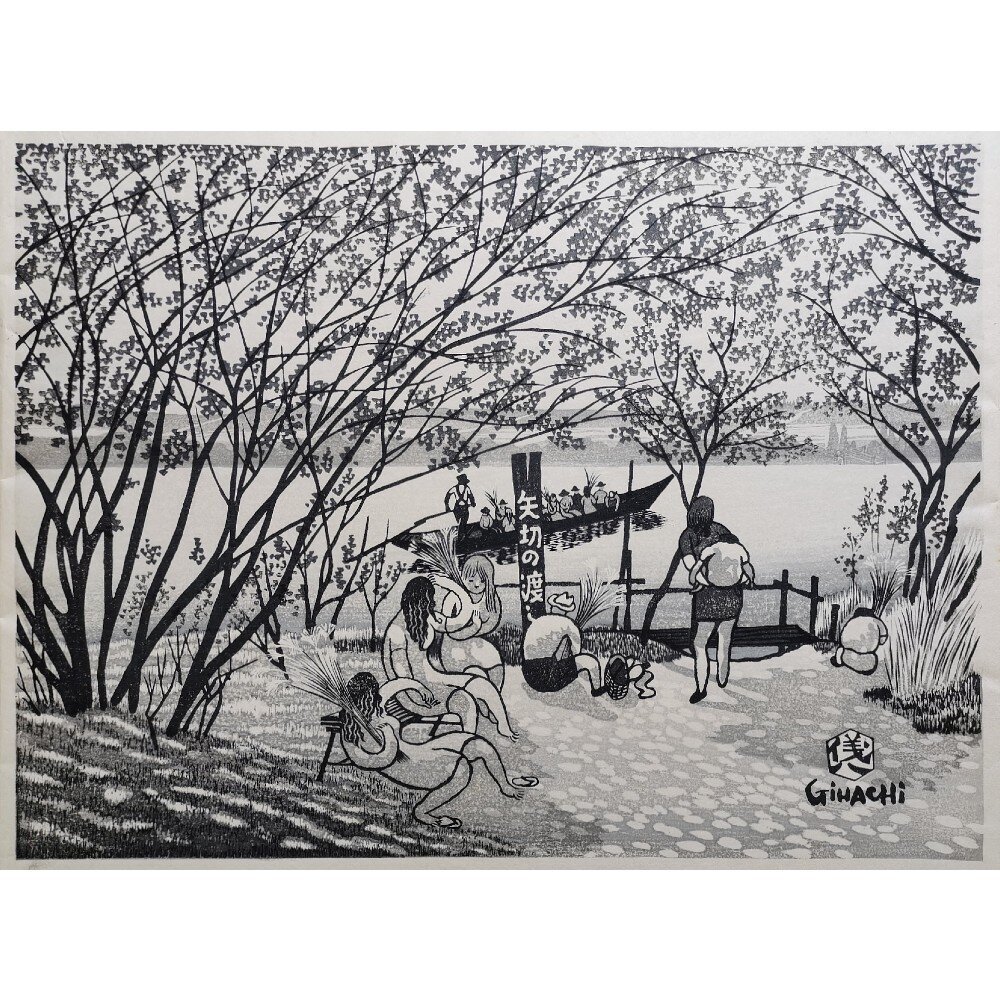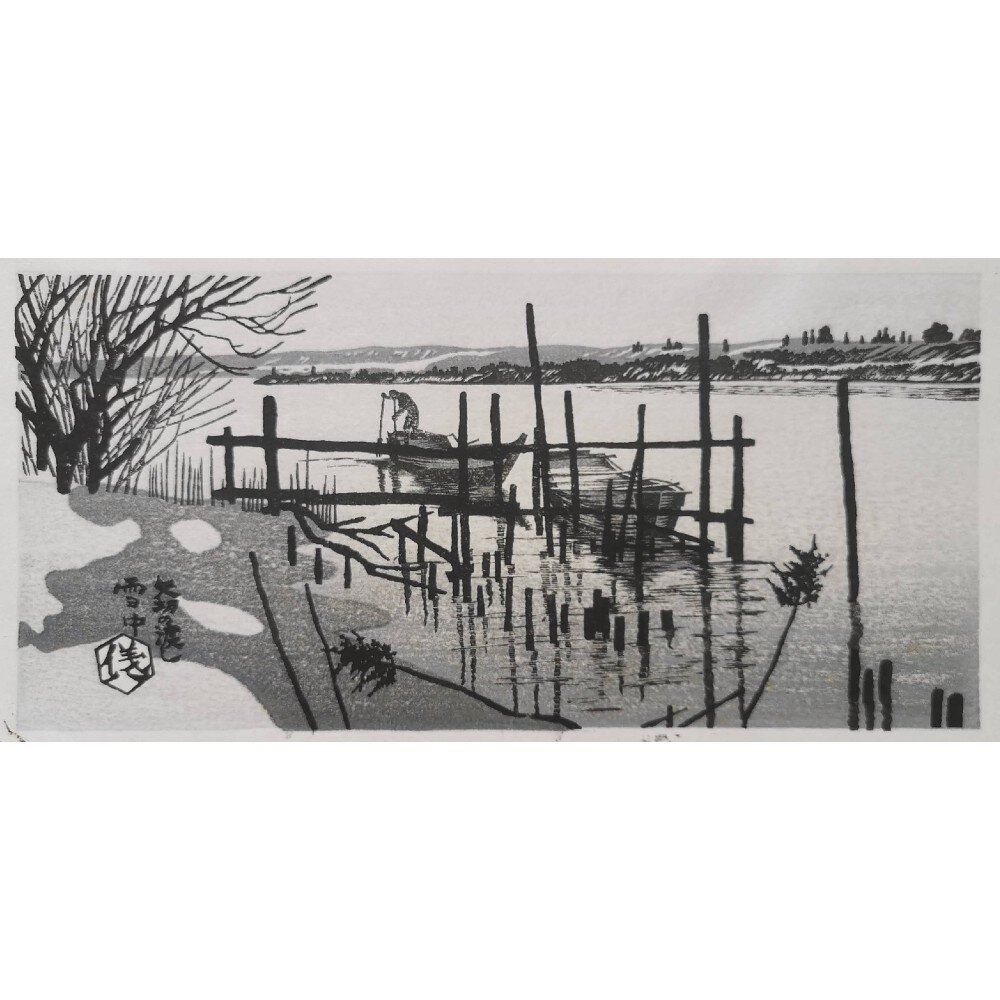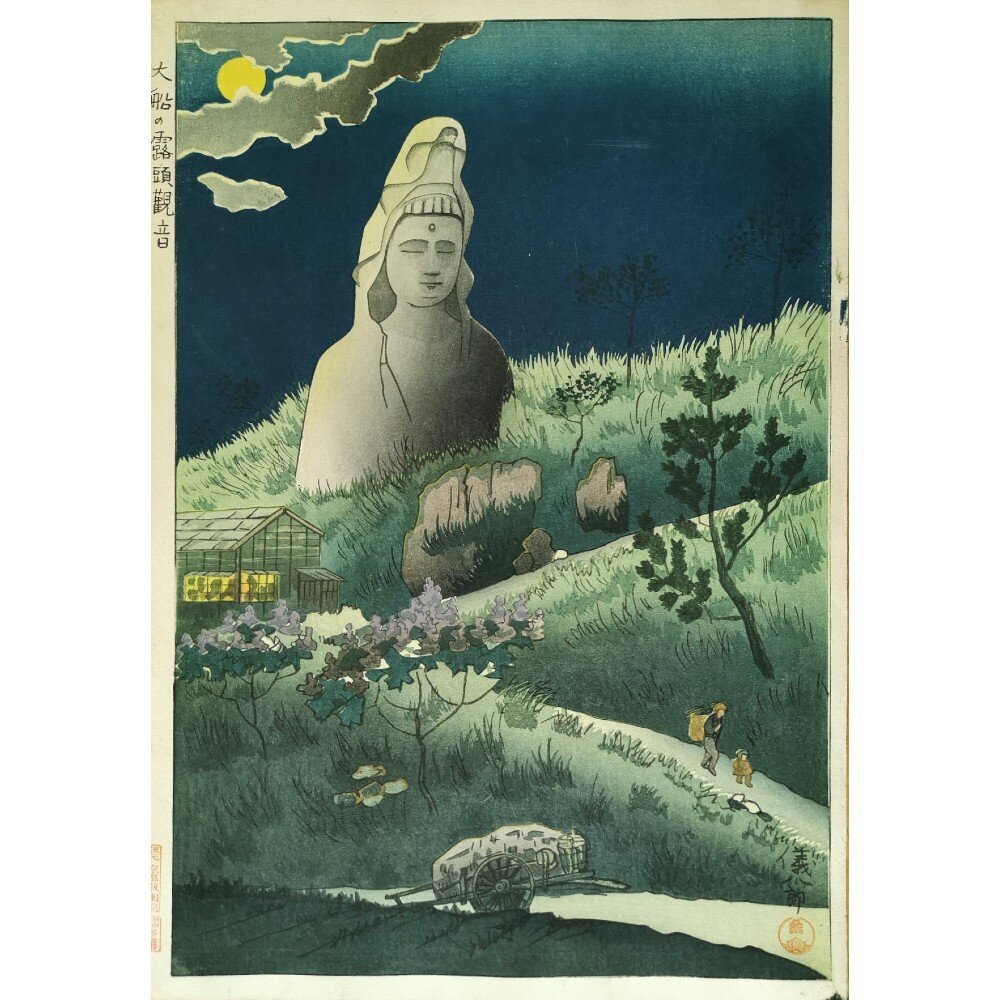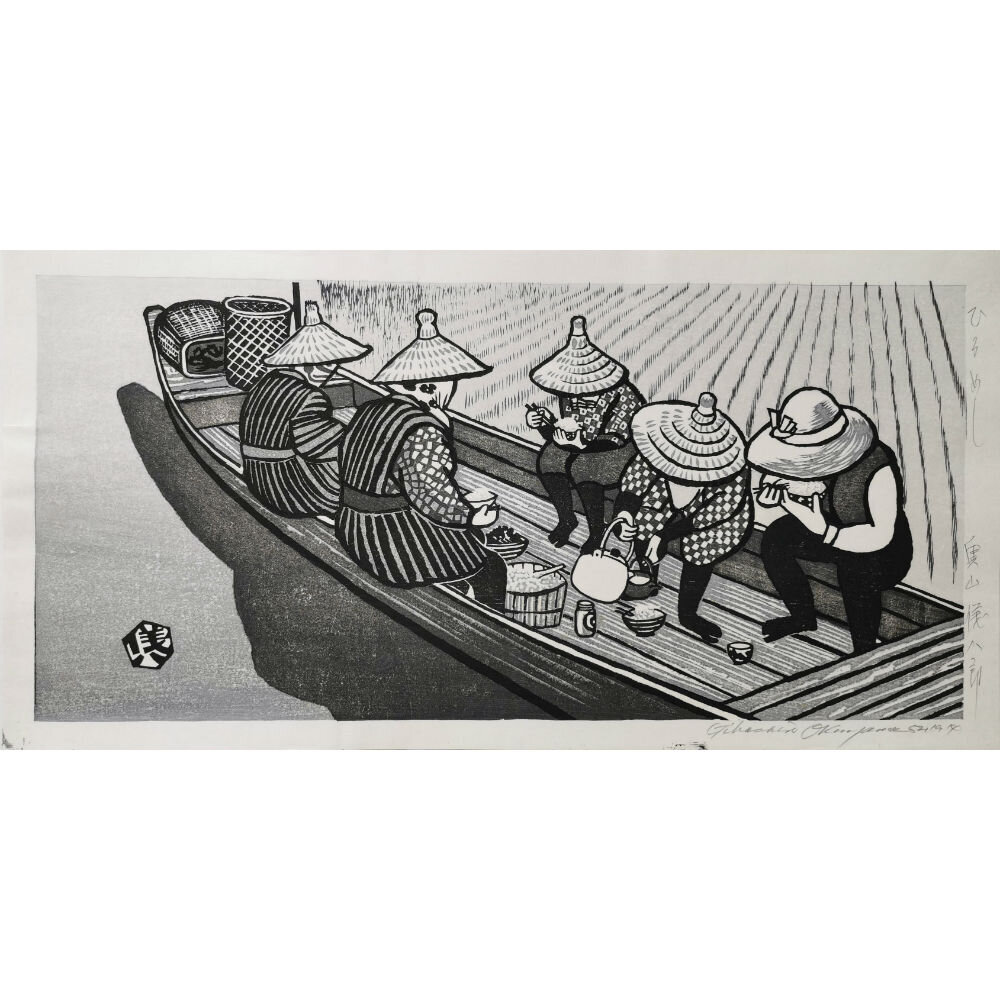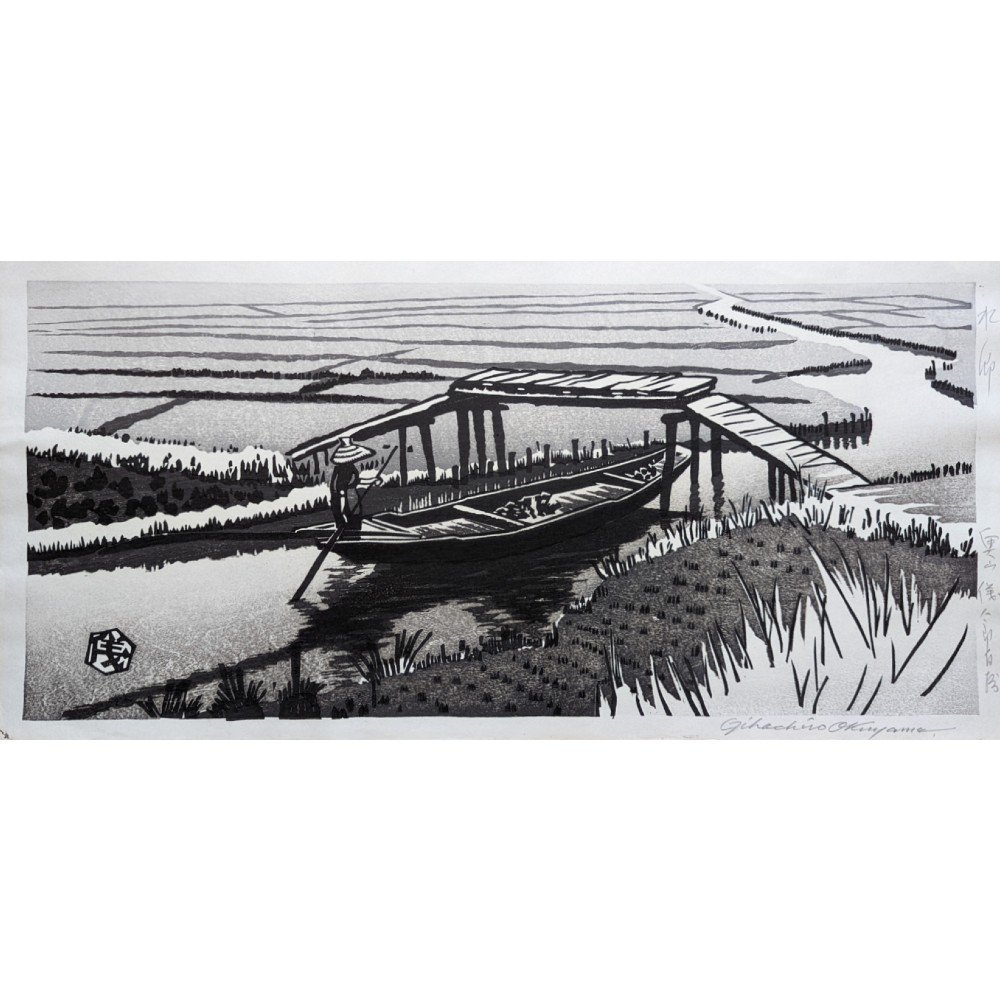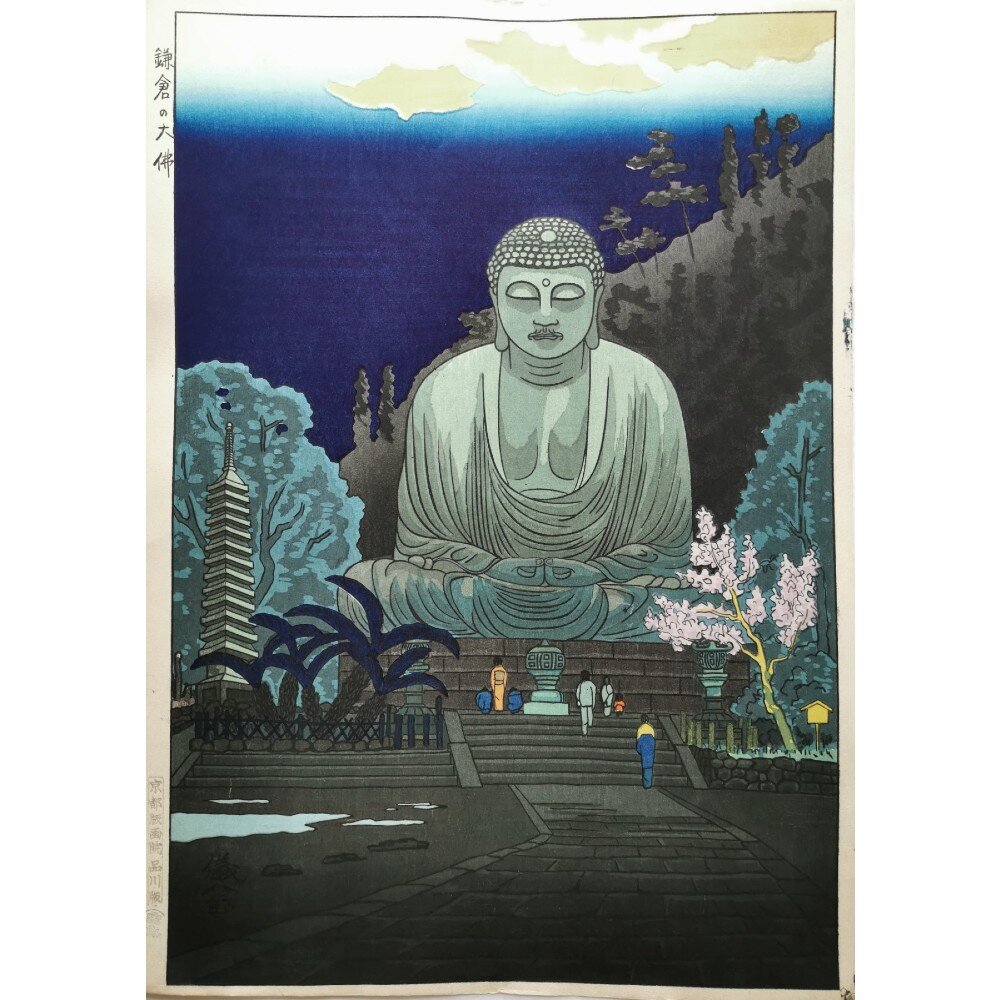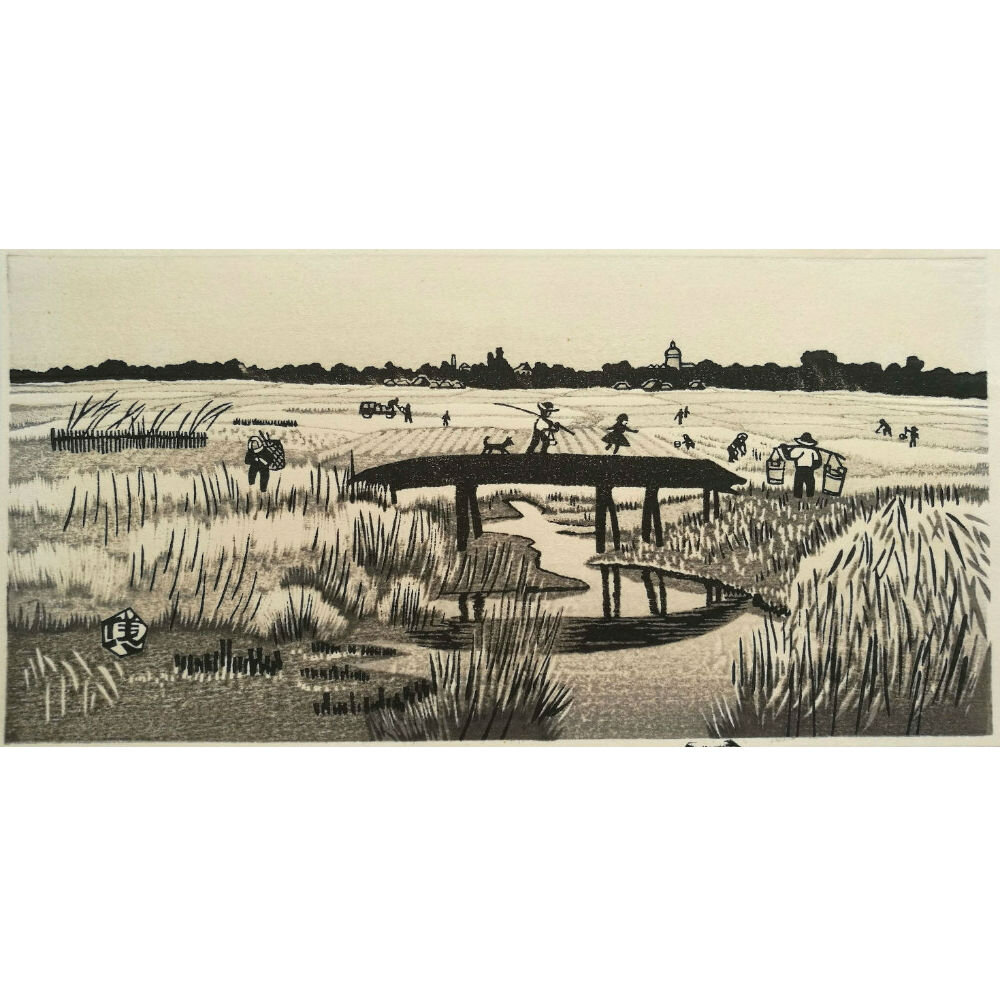奥山儀八郎 GIHACHIRO OKUYAMA (1907-1981)
Gihachiro Okuyama was a very creative and flexible artist, printing works in both shin-hanga and sosaku-hanga traditions from the late 1920's onward. One of only a few artists to work within the commercial arts; Okuyama produced posters, designs, and advertisements for various firms throughout the limited fine art market of the great depression and Pacific war era.
Taking inspiration from numerous artists during his lifetime; Gihachiro Okuyama studied under Kosaka Gijin & Ishii Kendo, and notably admired the works of Hiroshige and Van Gogh. Influencing two distinct bodies and styles of work, Okuyama produced over one thousand designs during his lifetime - offering the collector a superb body of work to discover. With a clean and sharp subtlety to his work, Gihachiro Okuyama is becoming ever more sought after as many of his designs are slowly unearthed.
Artist Biography:
Okuyama’s early interest in woodblock printing evolved primarily in the 1920’s from his studies under Kosaka Gajin. A print artist exposed to European/Western methods, Kosaka Gajin was a keen supporter of the developing sosaku-hanga* movement at that time, and one of its early leading figures - Hiratsuka Un'ichi. Influencing his early work; Okuyama’s career developed within the sosaku-hanga style and by 1927 Okuyama was exhibiting regularly with the Nihon Sosaku-Hanga Kyokai (Japanese Creative Print Association). In 1928 he won first prize and with it bought recognition, signalling the next step in his career.
Entering the commercial world, Okuyama began to produce posters, designs and advertisements in moku-hanga* style for both the Japan Wool Textile and Nikka Whiskey companies. Whilst his own exhibitions continued to run in parallel in the background, the commercial work proved useful in a financially difficult time for Okuyama. Following the 1929 Wall Street Crash and the beginning of the great depression, demand for Japanese prints fell and artists struggled to sell their work. Later in 1931 he created his own advertising company, founding the Tokyo Kokoku Bijutsu Kyokai (Tokyo Advertisement Art Association) (later renamed to the Tokyo Advertising Creators Club).
During this time, Okuyama had been studying with another foremost artist, Ishii Kendo, – a leading figure on Ukiyo-e art. Learning the traditional techniques of printing; Okuyama began to work within yet another realm of woodblock printing. In complete contrast to sosaku-hanga style, where the artist held complete control - designing, cutting, printing, and publishing their work -Okuyama began to produce works that drew on old traditional philosophy/methodology of woodblock printing.
Incorporating traditional themes of ukiyo-e (landscapes, beautiful women, and actor portraits), this movement and hanmoto* process of printing, known as shin-hanga*, also drew in additional elements such as the use of perspective, deeper colour and of light to his designs.
Okuyama was involved in both the sosaku-hanga and shin-hanga movements. Reflected in his work today, we are able to distinctly distinguish between two differing styles of print. One body of work is printed in colour and reflects a shin-hanga style of printing, whilst the other sosaku style is identified by his works printed in black and white. It is interesting to consider whether Okuyama chose to explore the shin-hanga style because of the financial hardships at the time. They were often cheaper to produce. Sosaku-hanga style work was much more expensive as the artist had to do all the cutting, printing and publishing himself and naturally took a great deal of time to produce.
In Tokyo 1934 Okuyama Gihachiro’s son was born – Okuyama Gijin. However, times were still difficult; rising tensions prior to the war had devastated the American market for Japanese goods and things only continued to worsen during the Pacific war. As a result, Okuyama became active in the Nihon Hanga Hokokai, a wartime organisation in which shin-hanga and sosaku-hanga artists worked together in the aim of getting material for their work. Furthermore, in 1942 Okuyama found the Shin-hanga Kyokai with contemporaries Azechi Umetaro and Takayama Uichi.
After the war Okuyama established his own publishing firm in 1946, the Nihon Hanga Kenkyusho (Japan Print Institute), to promote the popularity of woodblock prints once again. Together with his own prints, the firm focussed on producing reproductions of Hiroshige prints and other Ukiyo-e* works from recut blocks. Okuyama settled with his final venture in 1954, establishing his own workshop, Okuyama Hanga Kobo, in Matsudo.
Living in Matsudo for the rest of his later life, Okuyama continued to produce his own prints together with facsimile reproductions of works by inspirational artists Hiroshige and Van Gogh. Gihachiro Okuyama died on 1st October 1981 in Matsudo, Chiba prefecture. His son Okuyama Gijin has since continued the work of his father – producing posthumous prints together with his own designs from the same Matsudo studio.
Pencil signed vs unsigned (theory): Many of Gihachiro Okuyama’s designs are often found with both unsigned & pencil signed counterparts. It appears he may have often cut both smaller (approx 12cm x 24cm) and larger (24cm x 48cm) runs of the same design - the larger versions being pencil signed.
b: 17/02/1907 - Sagae, Yamagata Prefecture, Japan.
d: 01/10/1981 - Matsudo, Chiba Prefecture, Japan.
Written by: Jack Payne | © Lambsquay Gallery
BIBLIOGRAPHY/ARTICLES:
City, M. (n.d.) 奥山儀八郎(おくやま・ぎはちろう)1907年から1981年 版画家. [Online]. 奥山儀八郎(おくやま・ぎはちろう)1907年から1981年 版画家 まつどの観光・魅力・文化|松戸市. Available from: https://www.city.matsudo.chiba.jp/miryoku/kankoumiryokubunka/rekisi-bunka/dezitarubizyutu_top/search/search_a/a003/index.html [Accessed: 6 November 2018].
Merritt, H. & Yamada, N. (1999) Guide to modern Japanese woodblock prints: 1900-1975. Honolulu, Univ. of Hawaii Press.


